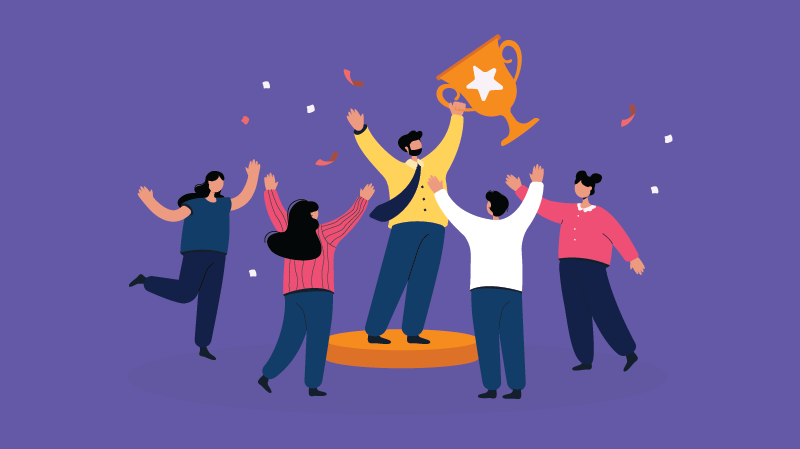Employee Recognition Program: Things You Need To Know!!
If you are a leader or an HR, you have a pretty good idea of how difficult it is to create a culture of recognition. Not only is it overwhelming, but it also needs a lot of strategy and planning. And that is something this blog will cover and give you a good headstart on how you can start your employee recognition program.
According to Globoforce, 83% of HR leaders say that an employee recognition program benefits their company values.
Key Takeaways
- Understand what a recognition program is.
- Delve into how to create a recognition program for your employees.
- Explore different rewards and recognition ideas.
- The benefits of having a good employee recognition program.
- Various platforms that you can use to enhance your recognition efforts.
What is an Employee Recognition Program?

Employee recognition programs are structured organizational initiatives to acknowledge and reward employees for their efforts, achievements, and hard work. These programs are designed to motivate and engage employees while focusing on retaining them in the long term.
When you put in place a good recognition program, it fosters a superb work culture and helps create a work environment where employees feel valued. In the long run, this enhances satisfaction, strengthens loyalty, and encourages employees to perform at their best.
Before we delve more into the topic, let us look at some examples and ideas that come under employee recognition. These are effective, as well as impactful, that boost the productivity and satisfaction of your employees.
Only 52.6% Of Employees Surveyed Have Employee Recognition Programs At Their Companies.
Effective Employee Recognition Examples
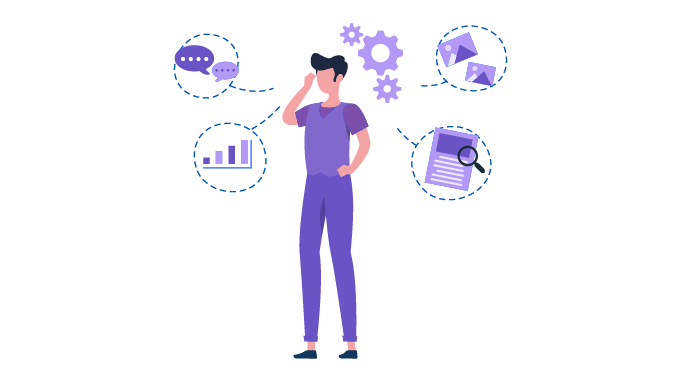
Employee recognition is more than just a program. It requires a few good ideas that will make it complete. And below is a list of examples that we think will help boost your efforts in creating a good program.
Monetary Rewards:
This could include things that work as monetary incentives for the employees. It can be bonuses, gift cards, or any other form of financial incentive that can play a crucial role in increasing productivity.
Non-monetary Rewards:
These can range from verbal praise and certificates of achievement that make the employees feel valued and good for their work.
Employee of the Month/Year:
It is a type of recognition that acknowledges standout employees regularly for their performance or contributions.
Peer-to-peer Recognition:
This is one of the most effective parts of the recognition program, where employees recognize and nominate their peers for outstanding work or contributions.
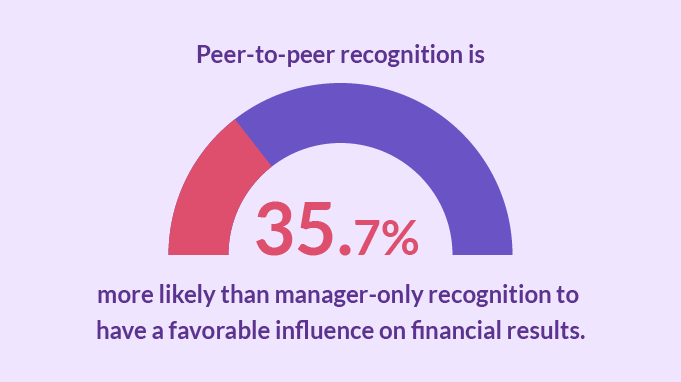
Service Awards:
You cannot just oversee those employees who have put in years of effort for the organization. Service awards help recognize and reward employees for their years of service to the company.
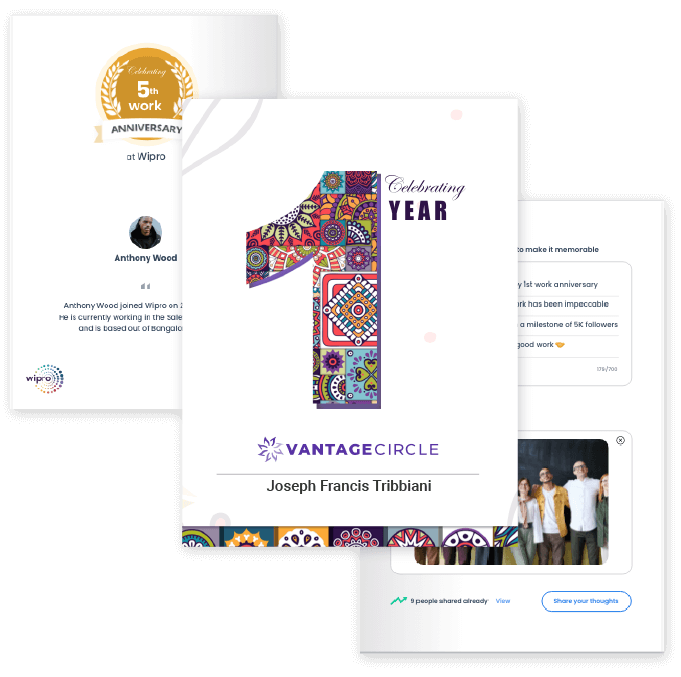
(Source: Vantage Circle)
Spot Awards:
These are instant recognition for employees who go above and beyond, which can be done without waiting for a formal ceremony or event.
(Source: Vantage Circle)
Training and Development Opportunities:
Offering courses, workshops, or educational opportunities as a form of recognition is something you can add to your recognition programs.
Public Recognition:
Celebrating the employee’s achievement publicly in front of the team, during meetings, or through company communication channels can boost employee morale.
Personalized Recognition:
Tailoring recognition to individual preferences, such as a note of thanks or a gift that reflects the employee's interests, can help elevate your recognition programs.
These are a few of the things that you can include in your recognition program. The rest is upto you as you develop your own ideas and be more unique with your approach. And if you want to know more about rewards and recognition ideas, head over here.
What are the benefits of the Employee Recognition Program?

Understanding the benefits of an employee recognition program will give you an upper hand in implementing it well. Below are a few benefits an organization can enjoy with it.
1. Enhanced Productivity
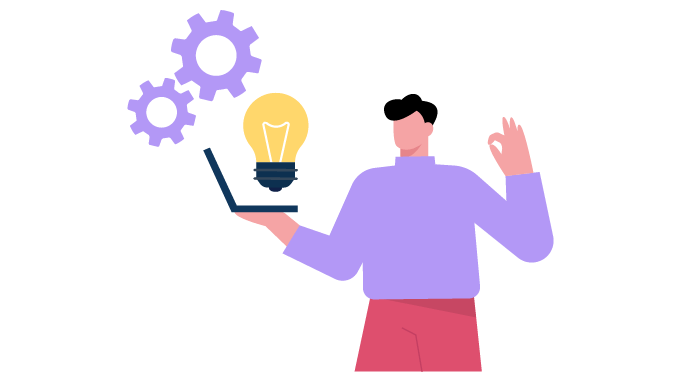
Recognized employees frequently have a stronger personal connection to their job and coworkers, which leads to improved effort and higher productivity.
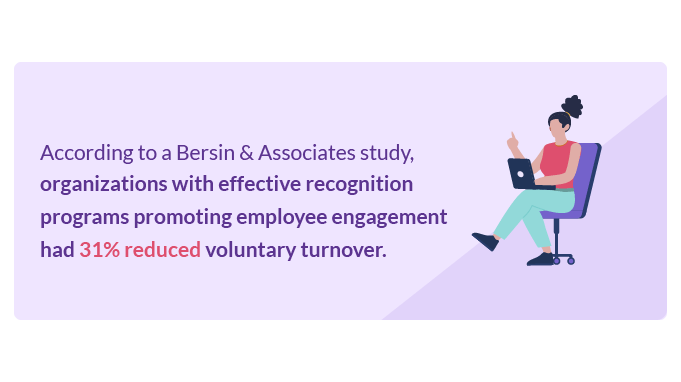
According to a Bersin & Associates study, organizations with effective recognition programs promoting employee engagement had 31% reduced voluntary turnover.
2. Increased Employee Retention and Lower Turnover

Feeling valued and appreciated increases job satisfaction, reducing the likelihood of employees leaving the organization. The cost of employee turnover can be significant, often estimated to be 1.5 to 2 times an employee's annual salary.
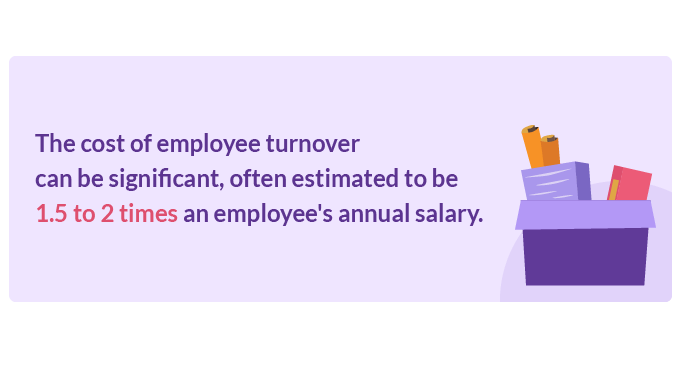
Companies can save considerable resources on hiring, training, and transitional inefficiencies by reducing turnover.
Read more: High Employee Turnover: 7 Major Reasons (+How To Solve Them)
3. Boosted Employee Engagement
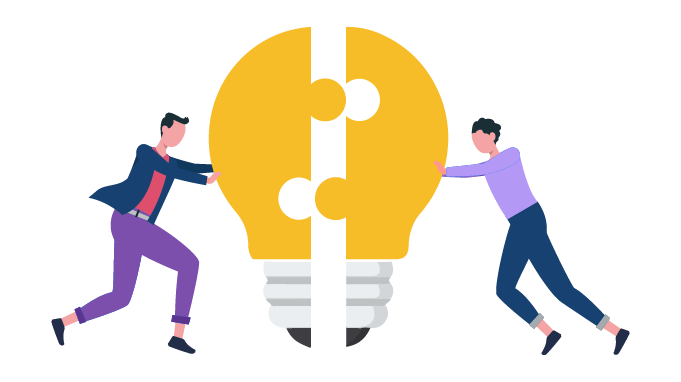
When employees are engaged, they feel connected to their work which increases their commitment over time. And this is only possible when you recognize them often for their hard work and dedication. This lets an employee think about their contribution and the value that they generate through their work. In the long run, they find purpose in what they do and become engaged in their work.
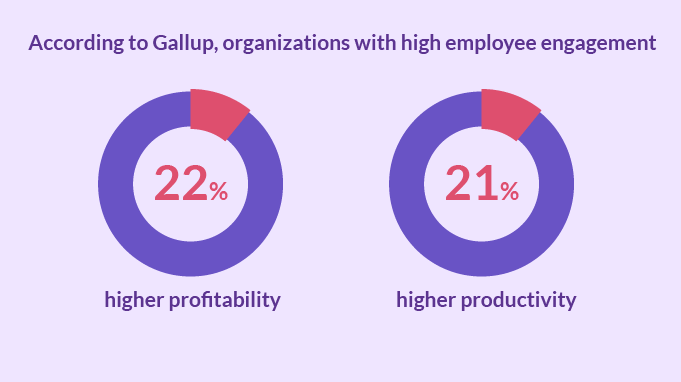
According to Gallup, organizations with high employee engagement report 22% higher profitability and 21% higher productivity compared to those with low engagement.
4. Strengthened Company Culture and Values

According to a study, 53% of employees feel that recognition is an everyday part of their work culture.
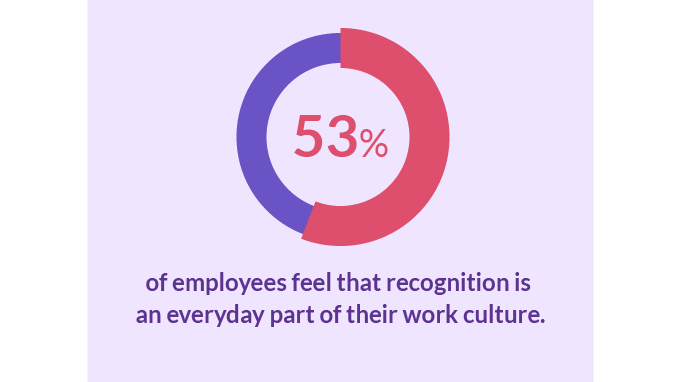
Recognition programs promote behaviors consistent with the organization's basic values. Consistently rewarding certain behaviors over time can create a self-perpetuating cycle in which employees embody and promote organizational principles, resulting in a more cohesive and pleasant workplace culture.
5. Improved Employer Brand and Attractiveness
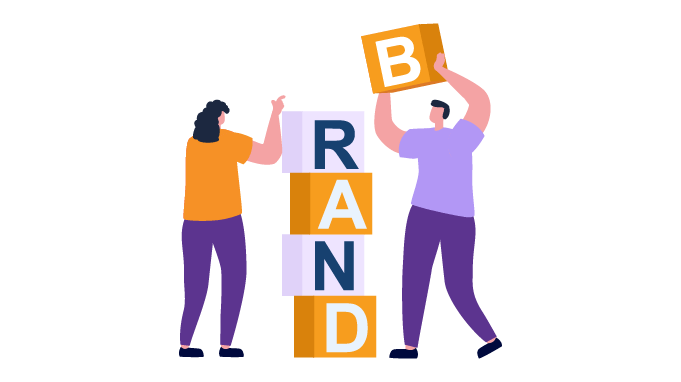
Organizations known for recognizing and valuing their employees tend to attract top talent. In a LinkedIn survey, 75% of job seekers said they consider an employer's brand before even applying for a job.
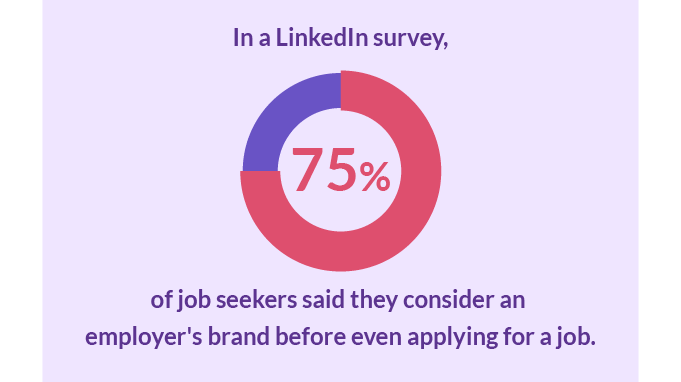
Positive employee testimonies, especially regarding recognition, can help an employer's brand and make recruitment more effective and efficient.
How to Create a Recognition Program for Employees?
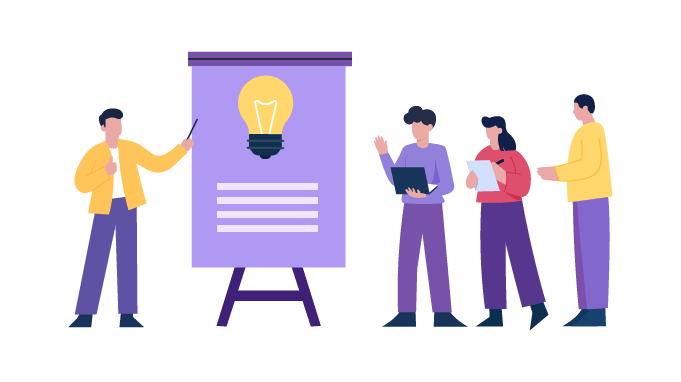
We get it; creating an employee recognition program requires a lot of brainstorming. But is that enough? Maybe yes, or maybe no. The ultimate goal is to take action and add life to the ideas discussed thoroughly.
The great thing is that creating a recognition program is not as hard as you might think. All you need is the right formula.
Here is our six-step guide(well, almost) to create a great recognition program.
1. Clarify Your Vision
Before implementing employee recognition programs, you must be clear about what it involves.
Goals
Be sure about your goals, expectations, and the intended result from the employee rewards and recognition program.
Identify the purpose of implementing the program. Is it to increase the level of employee engagement? Boost sales? Or to establish better company culture?
Once you set your prime goal, it will become easier to build a program that'll work to fulfill your objectives.
Benefits
A good practice is to look for companies that have already implemented it successfully. Read up on the studies, tips, and ways to maximize the program's efficiency.
Also, ensure the program is agile and can keep up with your expanding workforce. A necessary step is to look for rewards and recognition programs supported by intelligent frameworks like SOLI.
Overall, gather a better understanding of how such a program can be aligned to meet your company's goals and needs and benefit you in the long run.
Cost
Providing a cost estimate to avoid overspending or a negative ROI (including hidden costs) is essential.
Even more efficient is to do an intelligent budget allocation. For small companies, estimating the cost of a rewards and recognition program might be more feasible. However, things might turn a bit tricky when it comes to mid-sized and large companies.
Related: The Amazing ROI of Rewards and Recognition In Your Organization
2. Build A Committee
The first step is to form a committee for the employee rewards and recognition program to be efficiently implemented.
Regardless of the size of your company, appoint a few people who will be responsible for implementing, managing, and establishing reward programs.
A well-chosen committee will assist you in implementing the program efficiently by communicating and reinforcing the R&R program's belief within the workforce.
While building a committee, remember the following tips:
-
Good knowledge of the program.
-
Shows interest in the program.
-
Shows leadership initiative.
-
Believes in company values.
Once you form the committee, keeping track of employee success, such as work anniversaries, employee birthdays, and promotions, are excellent occasions to reward and appreciate.
3. Define Clear Characteristics
The next step before executing reward programs is to understand the characteristics that should act as the building block:
Timely
Recognition delayed is recognition denied. Waiting to appreciate top performers only results in lessening the impact of recognition when eventually given.
Recognizing someone when they achieve their goals is considered a good practice. Create a culture of appreciation where every small and big
employee's performance gets rewarded on the spot.
Frequent
According to a study, 77.9% of employees would be more productive if recognized more frequently.
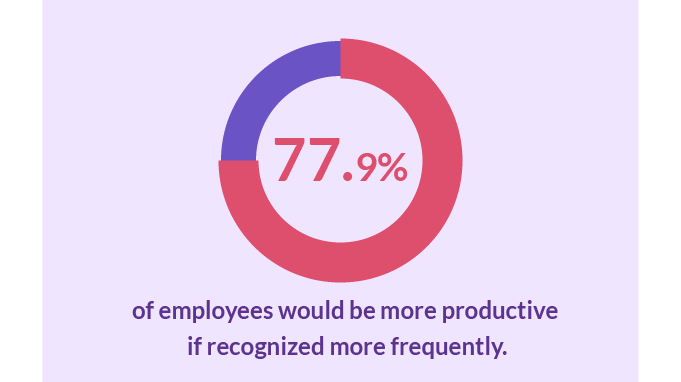
Recognition is just like motivation. It is only valid when handed out regularly. Recognition should be a real-time process where no good work should go in vain.
The beauty of an R&R program is the simplicity behind it. It's not only appreciating the bigger milestones but celebrating the small achievements altogether.
Specific
Recognition is more meaningful when distinct accomplishments get celebrated. Being specific means employees know that a certain amount or kind of performance will bring praise.
Moreover, it makes people feel that good performance is tied to getting great incentives. It helps establish the belief that you pay attention and appreciate particular behaviors.
Value-Based
Maybe the most important form of recognition aligns with your company values. If your company has a set of deep-rooted values, seek to incorporate the same in the rewards and recognition you give the team members.
4. Define Clear Criteria
The key to meaningful recognition in the workplace is to set the criteria for getting rewarded and appreciated.
Recognition should be attainable, easy, and convenient for the workforce. You must decide what form of good work is recognized to make rewards and recognition meaningful.
The idea behind creating criteria for recognition is to encourage behaviors you want to see flourish in your company. Review a series of criteria such as those below to find out what suits you best:
What type of behaviors should be rewarded?
Decide what type of behaviors and good work should be rewarded and appreciated based on the values you seek to cultivate in your company.
For example, suppose you are trying to tie productivity to your company's core values. In that case, you can instantly reward behaviors whenever an employee goes above and beyond to complete the job.
How should the said behaviors be rewarded?
It's important to set criteria for how staff recognition should occur and what rewards (for example, gift cards) get offered.
Rewarding desired behaviors sets a standard for those behaviors to be followed throughout the company.
How often should you recognize your employees?
Recognition is useful when it is frequent in nature. Public praise can be more effective than recognition given in private.
Amplify the effect of recognition given by making it more frequent and timely. Additionally, employees feel better about their team members' appreciation than their managers.
5. Ensure Successful Implementation
Once you get the necessities out of the way, it's time to implement the program successfully.
Get the employees onboard
The success of the R&R program lies in how well the workforce takes on the program. Make employees aware of the program and encourage them to utilize it daily.
Additionally, make the program easy to understand so every employee can use it without hassle.
Senior management should advocate it
The supervisors, managers, and senior management should promote the use of the program and use it frequently. It will assist in depicting a setting in which employees take the R&R program seriously since their manager values it.
Align it with the company culture
If you want positive results, aligning the program with the company culture is the surest way. By doing so, you ensure that not only do you retain your present employees but are also able to attract the top performers.
Make it More DEI Oriented
Make sure your recognition program is diverse and free from bias. This is where the committee comes in. Their role is to ensure that everything is balanced and the practice of recognition is done fairly. Through thorough discussion, they can red flag any suspicious activity and remove the shortcomings.
Compared to workers who strongly disagree, those who strongly agree that they receive the appropriate acknowledgement for their work are four times more likely to view their workplace as inclusive and seven times more likely to view it as equitable. (Source)
Use of AI
With the onset of artificial intelligence, it is essential that your recognition program is AI-driven. It should be enabled to automate things with the help of AI and make things easier to use. Some of the features of AI can include things like, text prediction, reward recommendations, and feedback analysis. The idea is to make your recognition program more intelligent and adaptive to the always-evolving technological world.
6. Measure And Revisit
Your job is still not over after implementing the rewards and recognition program. You need to oversee how the impact of the program and measure it accordingly. The idea is to make changes with the changing dynamics and create a program that is more effective in the long run.
Measurement
Successful recognition programs are the ones that positively impact the company as a whole, i.e., productivity, business results, and brand value.
But without any way to measure it, the program's effectiveness is unsupported.
Companies employ many methods to measure the after-effects of implementing an employee rewards program. Out of these, the most popular seems to be an employee satisfaction survey program.
An employee satisfaction survey tool is a relatively cost-effective way to gather employee data about whether their engagement level has improved. They are quite easy to use and give you real-time data within a short period of time through which you can make informed decisions.
Revisit
With changing business demands and employee needs; it seems unfeasible that your rewards and recognition should stay the same. On the contrary, it must regularly evolve and adapt to meet the advancing workforce's requirements.
That's why you must regularly revisit the areas of improvement to tailor them to the present-day needs.
Read more: The Ultimate Guide to Optimising your Employee Discount Program
Various Employee Recognition Platforms You Need Be Aware

There are a number of recognition platforms available in the marketplace. However, here is a list of the top five platforms that G2 has come up with, and somehow, we resonate with it very well.
1. Bonusly
Bonusly is a fun and easy way to recognize all of your employees. Designed for users and admins, it includes peer-to-peer recognition tied to company values, automated celebrations for new hires, birthdays, work anniversaries, customizable awards, flexible survey tools, and an international reward catalog with a gift card, donation, and swag options.
2. Vantage Circle
Vantage Circle is a Global Employee Engagement Platform that uses artificial intelligence and machine learning to deliver easy-to-use and effective employee engagement solutions to HR. The company’s suite of solutions, namely, Vantage Rewards, Vantage Perks, Vantage Pulse, and Vantage Fit, addresses the conscious need to enhance workforce productivity, recognize and reward employees, generate real-time feedback, and enhance well-being while focusing on presenting a great employee experience.
3. Nectar
Nectar helps you create a culture people won't want to leave through consistent, meaningful peer-to-peer recognition & rewards. It helps you build a sense of community, evangelize core values and connect people to each other and your company's mission.
4. AwardCo
Everything you enjoy about Amazon is now available for employee recognition, rewards, and engagement. Awardco has collaborated with Amazon Business to provide your organization with millions of reward options, lower vendor fees, and dollar-for-dollar recognition spending to motivate and reward behavior. More options, less money spent, all on one platform.
5. GroupGreeting
At GroupGreeting, the belief is that the world improves when individuals feel valued and appreciated. The company's mission revolves around simplifying the process of expressing gratitude, one card at a time, from person to person. The service provided by GroupGreeting enables the creation of digital cards with the option for multiple individuals to add their signatures. The platform's contemporary method of collectively signing and sending traditional greeting cards ensures a user-friendly experience.
Famous Employee Recognition Programs That Are Successful
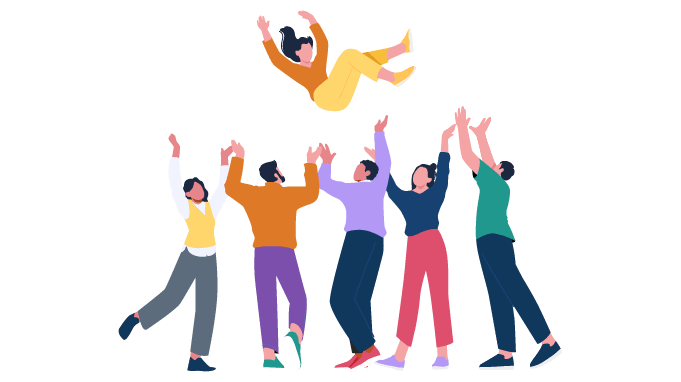
1. Salesforce!
So, in top-tier employee recognition programs, Salesforce unquestionably takes the lead. Their "Aloha" approach is about spreading positive vibrations, which translates to a work culture about well-being, making customers happy, being inventive, achieving success together, having fun, and giving back to the community. They're ensuring that coming to work is enjoyable.
And don't worry; they're not stopping there. They have this fantastic thing where they keep their personnel motivated. They have complimentary snacks and drinks, which is nice. But here's the kicker: every month, every employee receives a $100 credit to spend on things that make them happy.
2. Google
Let's move on to another standout when it comes to firms with outstanding employee recognition programs: Google. They have this recognition thing down to a science. Their strategy is about saying "thank you" and letting their staff know how much they appreciate it. What's more, guess what? It's not just the bosses who recognize one another; it's all about coworkers complimenting one another.
They have a wonderful setup dubbed "The Wall of Happy" - a specific section where staff can express their gratitude. They might send thank-you texts or shoutouts to their coworkers for their outstanding contributions. It's similar to a digital high-five!
But that's not all; Google has a few more tricks. It's all about surprising and rewarding exceptional performance. They have spot bonuses and awards that they hand out regularly to keep the motivation and good vibes flowing. It's all about showing that hard work doesn't go unnoticed!
3. Deloitte
So, let's talk about Deloitte; they're not just any corporation; they're the kind that Universum, a global leader in employer branding, named one of the most enticing employers in 2020. That is some serious acknowledgment right there. And what is the key to their success? It all comes down to keeping their personnel motivated and genuinely satisfied.
They have this wonderful platform that functions as a virtual party zone. It's intended to recognize employees who have gone above and beyond in their various roles. At Deloitte, the emphasis is on recognition and rewards.
But the fun doesn't stop there. When it comes to vacation, Deloitte has its employees covered. And it’s not just about basic leave- they are all about celebrating major life milestones.
4. Apple!
Apple's employee recognition program is all about offering a standing ovation for both little and large accomplishments. They go out with various events solely to make their employees feel appreciated. The "Beer Bashes" is a crowd favorite - it's like a party where staff can enjoy free beer, excellent appetizers, and awesome live music performances. Talk about having a terrific time!
However, that is not all they do. Apple is all about encouraging its employees to thrive and grow. They have these incredible learning and development opportunities that pave the path for genuine career advancement. And, hey, they're not just giving out high-fives but also offering recognized rewards. Think of discounts on their cool products as a way to say, "You're awesome, and here's a little something to show it." Apple's all about making their employees' journey exciting and rewarding!
5. Zappos!
Let's take a look at Zappos, the online retailer with an innovative employee appreciation program. They're all about giving each other props in a really cool way. Consider this: employees can award $50 to their coworkers for exceeding expectations or simply going the additional mile. It's like a virtual high-five with an added benefit!
But hold on; there's more. Zappos is not done yet. They have this cool thing called the Zollar Programme. Employees can accumulate points and store them on a gift card. They can then utilize these points to get some very useful goods. We're talking about workplace fans to keep you cool, sippers to keep you hydrated, workout bags, etc. Zappos is all about recognizing and rewarding employees in a fun and functional way.
Conclusion
Employee recognition is essential for fostering an engaging workplace culture. Creating an effective recognition program, on the other hand, necessitates preparation, commitment, and follow-through. The ideas presented in this blog give a framework for developing a successful program that encourages employees while also aligning with company values.
Be clear about your aims and vision while implementing recognition. Form a committee to run the program and specify the behaviors and achievements that should be rewarded. Make sure that recognition is timely, frequent, precise, and based on values. Establish precise criteria for what deserves praise and how it should be presented for optimum impact.
Tailor your approach using the tips here and watch your workplace culture transform through the power of recognition. Employees who feel appreciated bring their best to work each day, fueling business growth and success.
FAQ
Q. How to implement employee rewards and recognition program?
A. To implement an employee rewards and recognition program, start by defining clear objectives and criteria. Engage employees for input, design a mix of both formal and informal recognition methods, and regularly review and adjust the program based on feedback.
Q. What’s the important factor of a recognition program?
A. The most vital aspect of a recognition program is its authenticity. A program should really recognize and recognize employees' accomplishments and contributions. When recognitions are viewed as false or merely a formality, they lose their significance and may even demotivate the workforce. Employees are more likely to feel valued and respected when they are authentic.
Q. How effective are employee recognition programs?
A. When implemented honestly, employee appreciation programs are extremely effective. They promote morale, engagement, and can lead to higher retention rates. Employees who are recognized frequently display higher productivity and commitment to organizational goals.
Q. What are the different types of employee recognition programs?
A. Some common types include service awards, peer-to-peer recognition, performance-based awards, and spot rewards for spontaneous acts of excellence.













